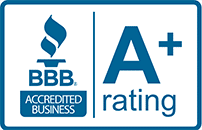Vandalism
Many property crimes are prosecuted under Ohio law. Each has distinct legal elements and is tied to unique penalties. The crime of vandalism concerns serious physical harm inflicted upon certain structures. Destruction of property that does not meet the criteria noted below is not “vandalism” for the purposes of this criminal offense but may be punishable under a different statute.
There are several situations under which someone can be convicted of vandalism in Ohio:
- The first involves physical harm to any occupied structure or its contents.
- The second involves physical harm to property that is owned or possessed by someone else if that property is used by that person for the purpose of their business, trade, profession, or occupation, and the amount of physical harm inflicted on the property amounts to a minimum of $1000.
- The third involves physical harm to property that is owned or possessed by another if that property is necessary for its owner or possessor to engage in their profession, trade, business, or occupation regardless of how much damage is done and the valuation of that damage.
- The fourth involves knowingly causing serious physical harm to property that is controlled, owned, or leased by a government entity, such as a state agency, public university, or school district.
- The fifth involves knowingly causing serious physical harm to a memorial for the dead, any property used to protect, enclose, or decorate a cemetery, or a cemetery itself. It is also prohibited to break into a structure used as a memorial or enclosure for the dead without explicit privilege to break into a tomb, crypt, casket, or similar structure.
When referring to the crime of vandalism, “cemetery” means any place of burial, including burial sites that contain Native American burial objects placed with or containing Native American human remains. Also, when referring to the crime of vandalism, “serious” physical harm means damage to the property resulting in a loss in value of no less than $1000.
Ohio Vandalism Attorney
At Joslyn Law Firm, our experienced Columbus criminal defense attorneys have helped countless individuals who are facing vandalism charges with the defense of the case. If you are facing vandalism accusations, it is important that you take steps to defend yourself from the moment of your arrest. Allow our skilled legal firm to discuss your case and assist you in fighting the charges as part of the Ohio criminal process.
You deserve to have someone speaking on your behalf and advocating for your rights. Call (614) 444-1900 to speak with Joslyn Law Firm today and schedule a free consultation. Joslyn Law Firm proudly represents individuals in Columbus, OH including the nearby cities of Delaware, Powell, Dublin, Westerville, Upper Arlington, Gahanna, Worthington, West Jefferson, Hanover, Lancaster, Pickerington, Circleville and Ashville, among others.
Information Center
Penalties for Vandalism
The crime of vandalism is graded as a felony of the fifth degree, fourth degree, or third-degree, depending on the amount of physical harm done to the property in question:
If the value of the property or the amount of physical harm caused is valued at a minimum of one thousand dollars but less than $7,500, vandalism is graded as a felony of the fifth degree. In addition to the standard penalties applied for a felony of the fifth degree, an offender may be charged an additional fine of up to two thousand five hundred dollars.
If the value of the property or the amount of physical harm caused is valued at a $7,500 but less than $150,000, vandalism is graded as a felony of the fourth degree.
If the value of the property or the amount of physical harm caused is valued at a minimum of one hundred fifty thousand dollars, vandalism is graded as a felony of the third degree.
In addition to the specific fine that may be imposed in the event of a conviction for vandalism of the fifth degree, sentencing of fourth and fifth-degree vandalism results in the application of one or more community control sanctions. These sanctions are punishments that don’t require a term of at least one year in prison, despite the fact that the crime in question has been graded as a felony. Instead, a judge may impose one or more community control sanctions that may include (but are not necessarily limited to):
- A fine of not more than five thousand dollars paid to the state (for a felony of the fourth degree)
- A fine of not more than two thousand five hundred dollars paid to the state (for a felony of the fifth degree)
- Reimbursement of any sanctions-related costs incurred by the government
- A term of up to six months at a county community-based correctional facility
- A term of up to six months in a jail
- Up to 500 hours of community service
- A term of house arrest with or without electronic monitoring
- A term of probation, monitored time, and/or curfew
- A requirement that the offender obtain employment, education, or job training
In the event that someone is convicted of vandalism of the third degree, sentencing guidelines include a rebuttable presumption that, in addition to any sanctions that ordinarily apply to vandalism convictions in the fourth or fifth degrees, an offender should be imprisoned for a minimum of one year.
Statute Of Limitations
The statute of limitations for vandalism is six years from the date of the alleged harm inflicted upon protected property. Once this statute of limitations has run, new charges may not be brought against alleged offenders.
Defenses for Vandalism
Some of the most common defenses to vandalism include:
Protected expression: art or protest – When property loses value due to a protected form of expression, this may serve as a mitigating factor.
Mischief – If the elements of vandalism cannot be proven, the charges may be downgraded to a lesser property crime, such as mischief.
Accident – If the destruction of property did not occur intentionally, an individual might be able to avoid liability for the harm caused.
Additional Resources
Guide to Vandalism and Related Offenses – This guide, published by the Office of the Ohio Public Defender, discusses a variety of property crimes prosecuted in Ohio and provides references for how numerous past cases were decided.
A Discussion on Why Graffiti is Art, Not Vandalism – When thinking about what defenses may be appropriate in any given case, exploring the idea that certain forms of alleged vandalism are either protected forms of art or protest should be considered.
Ohio Vandalism Lawyer | Joslyn Law Firm
Vandalism is a serious property crime in Ohio. It comes with grievous penalties such as incarceration and significant fines. Thankfully, you can protect your rights by retaining the guidance of a skilled legal attorney at Joslyn Law Firm. As proven Columbus vandalism lawyers, we can defend your freedom and uphold your interests.
Call (614) 444-1900 to schedule a free consultation with Joslyn Law Firm. We can review your unique case and create an individualized defense strategy that will set you up for success in court. Our lawyers represent throughout the greater Columbus area and nearby cities, including Bexley, Groveport, Worthington, and Hilliard.















